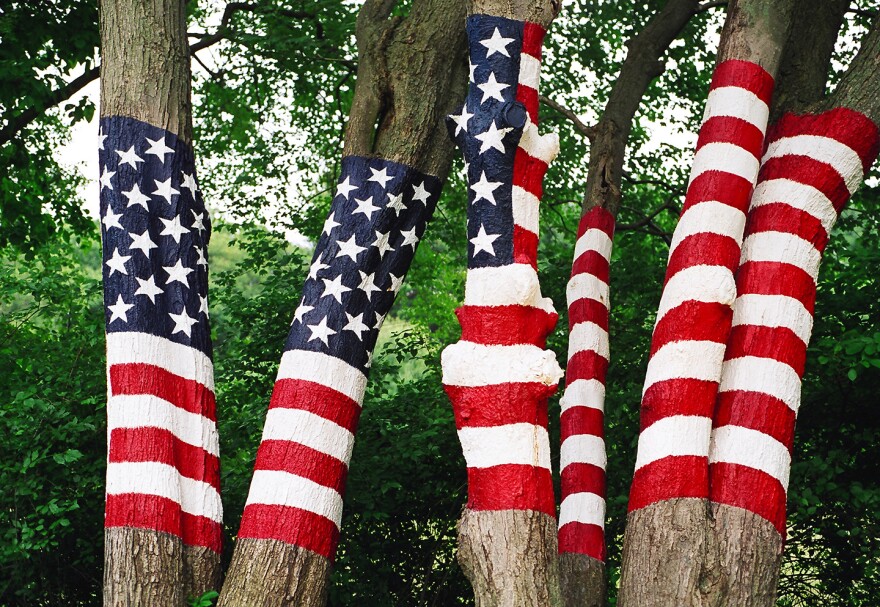An exhibit at the Mattatuck Museum in Waterbury explores the surge of patriotism immediately after the terrorist attacks of 9/11. “In the Wake of 9/11: Robert Carley’s American Journey” takes a look at artist Robert Carley’s 20-year quest to find images of the American flag painted on unusual or unlikely objects. The artist was moved by the spirit of patriotism Americans experienced back in September 2001.
“After 9/11, the terrorists called America ‘the great Satan.’ But I believe that America showed that we were ‘the good Samaritan.’ In the face of tragedy, we pulled together and we helped each other,” said Carley.
Carley says the idea to chronicle this unusual form of patriotism came to him as early as the day after 9/11, when he was moved by a man walking back and forth on an I-95 overpass waving a giant American flag. Carley recalls that American flags flew off the shelves in most stores, which is why he believes people started painting their own flags to show support.
“I noticed at a local liquor store, the owner painted this gigantic flag on a pumpkin, and I thought, ‘Wow that’s cool.’ Then soon after, I saw a guy in Norwalk with flags all over his bike, and I thought this was really beautiful and inspiring,” he said.
So, armed with an old Canon 35 millimeter camera he inherited from his father, he set out across the United States to find more of this unique patriotic gesture.
"I told my friends, I told my co-workers, I would call up police departments, I would call up post offices, asking if they had seen painted flags. “I would actually say a prayer when I went on a road trip, ‘God, help me find some flags.’ And more often than not, I’d get that little God wink back, something would happen that’s not a coincidence.”
Like the time he was in Michigan to see a giant flag painted on the side of a house. After taking plenty of pictures, Carley got in his car and left. But something told him to go back.
“I went back to the house, took some shots, and then about five minutes later this van pulled up and parked behind my car. All these flag-draped people jump out,” said Carley. “So I lined them up with their flag shirts, hats, bandanas, with the flag house in the background, and I got some really good shots. Turns out they had a flat tire.”

In his 20 years on the road, Robert Carley has seen it all — flags painted on barns, houses, cars, firetrucks, bales of hay and lots and lots of mailboxes. He guesses that he’s photographed over 100 subjects and has taken tens of thousands of pictures since he started the project. Carley’s exhibit at the Mattatuck Museum features just a fraction of those photographs. If you want to check them out, you’ll have to hurry — the exhibit closes after this weekend.

